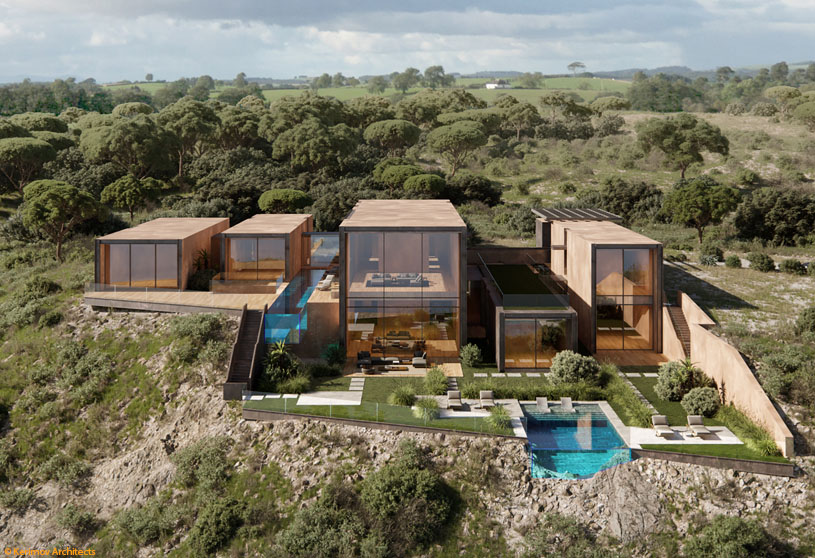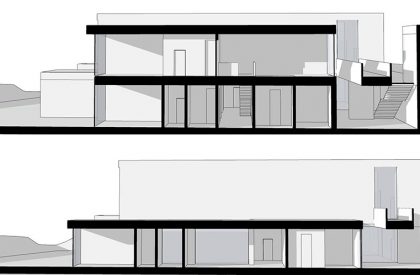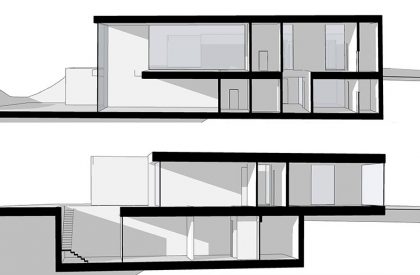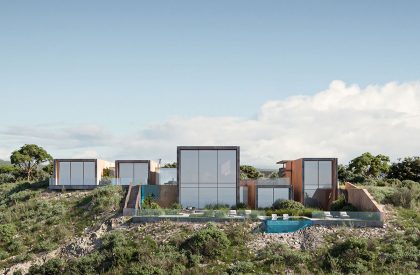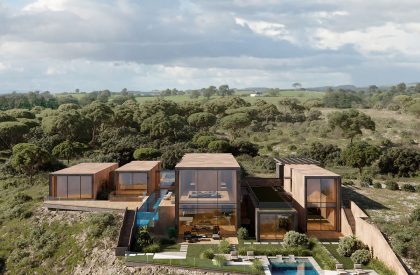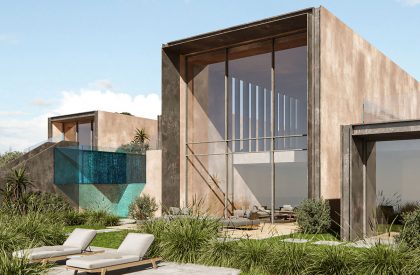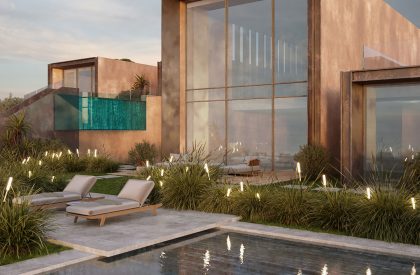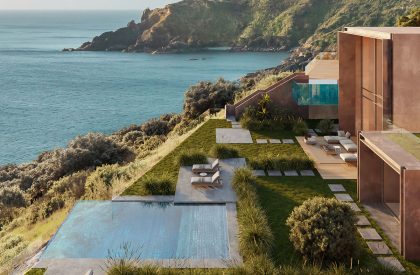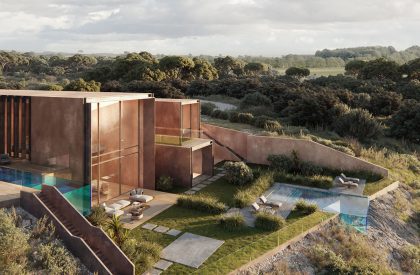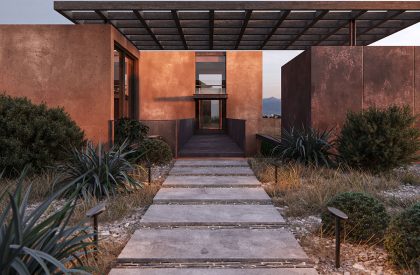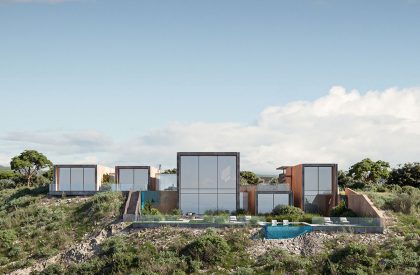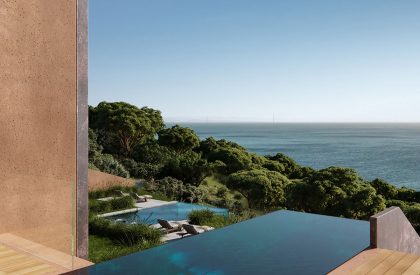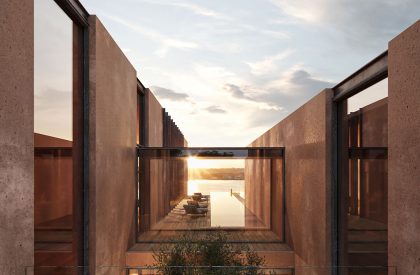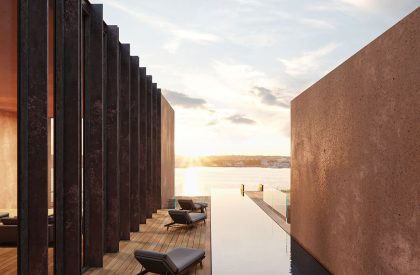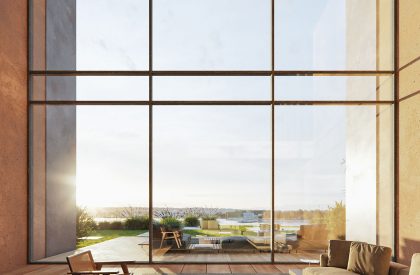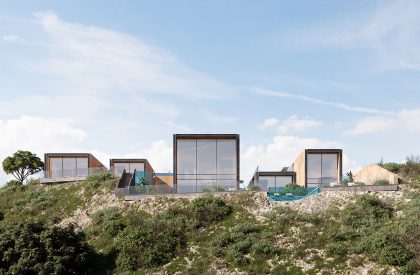Excerpt: Hidden House, designed by Kerimov Architects, has an arrangement of volumes, following the site’s topography, which achieves the effect of a natural elevation difference forming the terraces that become a continuation of the landscape. The colour scheme of the house, built of architectural concrete and metal, is inspired by the colour of the area: the sandy shade of the facade correlates with the colour of the rocks, so the house, like a chameleon, mimics the rocky landscape without standing out.
Project Description
[Text as submitted by architect] The 800 sq. m house is located on a cliff, near the ocean, in a natural environment. The project had to take into account the main requirement of the local municipality: the house should be practically invisible, minimally change the local landscape and not stand out in the environment, since the cliff in which it is located is clearly visible from the downtown.

The house is perfectly integrated into the landscape: from the side of the road, the building seems to be one-story, but from the side of the ocean and the downtown it is almost invisible. Thanks to the smart arrangement of the volumes, following the topography of the site, we were able to achieve the effect of a natural elevation difference: the terraces become a continuation of the landscape. It’s worth noticing that each level (zero and -1) has a view of the natural surroundings and natural sunlight.

The atrium structure is at the heart of the design. Each functional volume of the house is an independent architectural unit. The laconic-formed volumes made it possible to optimize the building area and achieve an architectural appearance that does not argue with the natural context. The color scheme of the house, built of architectural concrete and metal, is inspired by the color of the area: the sandy shade of the facade correlates with the color of the rocks, so the house, like a chameleon, mimics the rocky landscape without standing out.
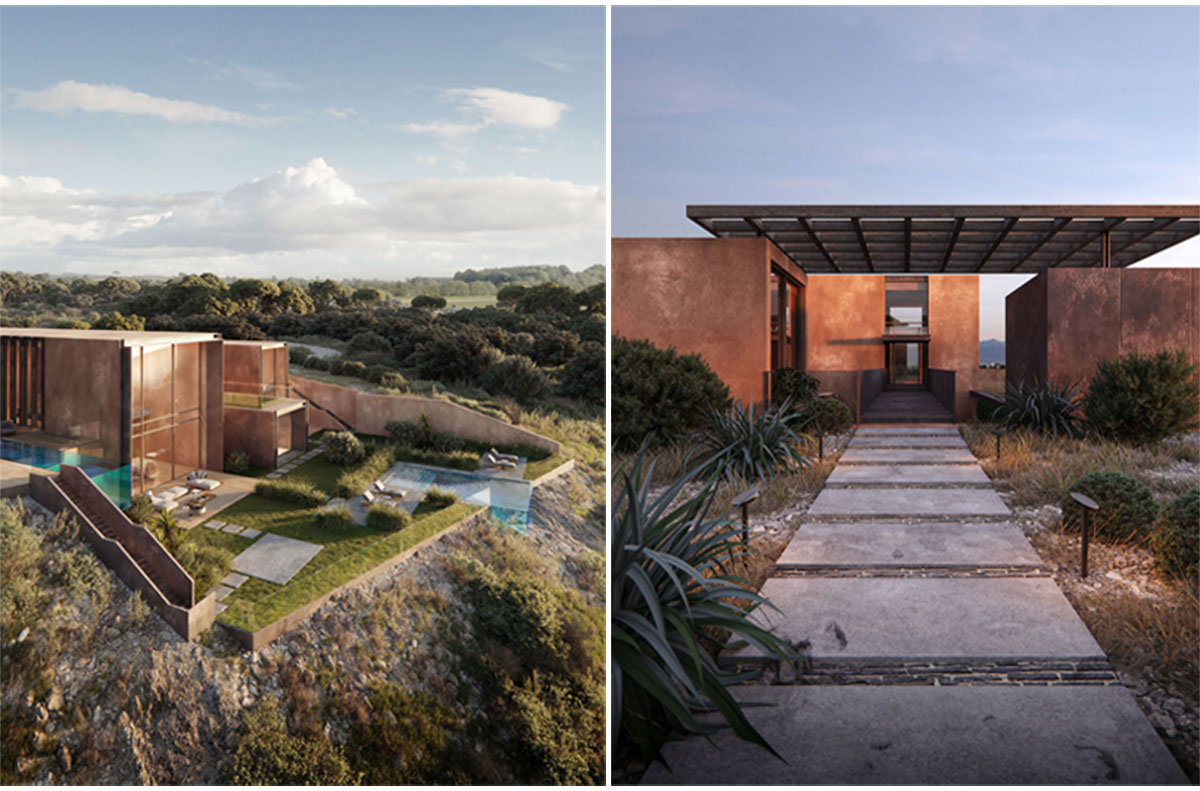

There are two pools in the project. One is a consoled swimming path with glass sides and a bottom; it is facing the ocean and is located at the level of the upper living room. The second is a large swimming pool at -1 level facing the cliff. The staff building, which separates the entrance group from the living area, has an exploitable roof with a roof garden where one can relax in nature and enjoy the view.

A bridge leads to the entrance group of the house, on the ground floor. The inner courtyard, on the lower level, can be reached by going down the stairs along the wall with a waterfall.
Strictly following the requirements for insolation, we oriented the house to the cardinal points and maximized all the windows at the main viewpoints. It allows the inhabitants to feel comfortable at home even in the hottest time of the year.



The project uses the sun as an additional source of energy: solar panels are installed on the roofs, which collect both solar and thermal energy. Thermal energy is used to heat the pool and to heat the house on rare cool days. The insolation of the house is also regulated by swivel lamellas installed on the windows.

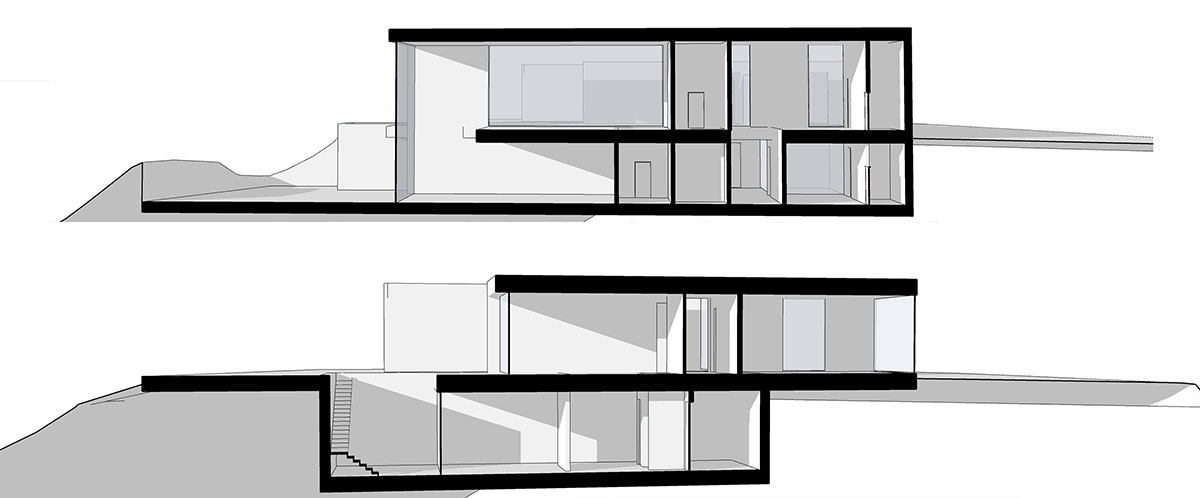
Since the rocky terrain is problematic for laying communications, we installed water collection tanks and funnels that collect rainwater for later use – watering plants and technical needs.
